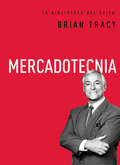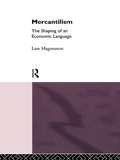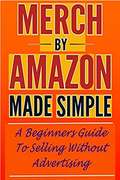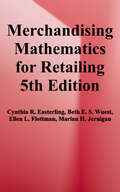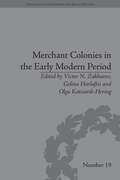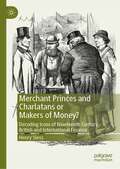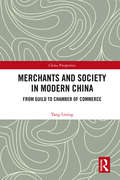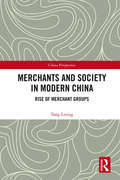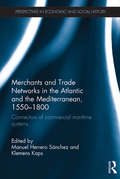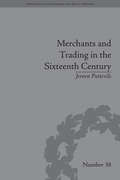- Table View
- List View
Mercado de ações para iniciantes: fundamentos explicados para investidores iniciantes
by Mauricio Chinemann Evan J. Houpt John BorderAPRENDA os fundamentos do mercado de ações e CONHEÇA o investimento em ações para iniciantes Esta edição melhorada e atualizada é destinada ao investidor individual que quer entender o mercado de ações atual e escolher investimentos inteligentes com base em conhecimento e na compreensão do panorama geral. O livro foi escrito com termos fáceis de entender e dá uma explicação clara sobre como as peças se encaixam no mercado. Os leitores sairão dessa experiência com um conhecimento detalhado e prático do mercado de ações, com um custo mínimo de tempo e frustração. O autor estimula os leitores a desenvolver as próprias estratégias e estilo de investimento por meio da observação e do aprendizado. A ênfase é manter o controle do dinheiro investido, seja em compras de ações individuais, de cotas em fundos mútuos ou até de uma combinação dos dois. As seções especiais de destaque abordam veículos de investimento novos e inovadores, como os SPDRs, e fornecem uma análise ampla das mudanças no mercado após a crise financeira de 2008. POR DENTRO do Mercado de ações para iniciantes Dentro do livro, você descobrirá: *Diversas opções de investimento; *Como definir e atingir seus objetivos de investimento; *Por que uma empresa emite ações; *Tudo sobre IPOs (ofertas públicas iniciais); *Como as ações são negociadas; *Tudo sobre Bolsas de Valores e os maiores índices; *Como ler o gráfico de uma ação; *Análise fundamentalista vs. análise técnica; *Investimento em dividendos e DRIPs; *Como escolher uma corretora; *Estratégias de longo prazo vs. curto prazo. Oportuno, detalhado e de fácil leitura, o Mercado de ações para iniciantes deve esta
Mercado financiero alemán para principiantes
by Robert Schmidt Alejandro Robles Vargas: Inversiones en la bolsa para principiantes y las bases del mercado de valores Esta edición mejorada y actualizada está dirigida al inversionista individual que quiere entender el mercado de valores de hoy y tomar decisiones informadas de inversión con el conocimiento y la comprensión general de los mercados financieros. Está escrito en términos fácilmente comprensibles y proporciona una explicación clara de cómo las piezas encajan en el mercado. Los lectores tendrán un conocimiento práctico y detallado del mercado de valores, a un costo mínimo de tiempo y frustración. Los autores animan a los lectores a desarrollar su propia estrategia y estilo de inversión personal a través de la observación y el aprendizaje. El énfasis está en mantener el control sobre su dinero de inversión, ya sea que opte por compras de acciones individuales o un fondo mutuo, o alguna combinación de ambos. Secciones especiales para analizar nuevos e innovadores vehículos de inversión como SPDRs, con un amplio análisis de los cambios en el mercado tras la crisis financiera de 2008.
Mercadona
by Zeynep Ton Simon HarrowThis case presents the predicament of a company trying to do right by its customers and its employees as the economic crisis of 2008 hits home. Fifteen years earlier, this Spanish supermarket chain had adopted its own version of total quality management, called the Total Quality Model, switching from the industry's traditional high-low pricing to "always low prices" and continuous improvement. These changes called for a well-trained, empowered, and enthusiastically engaged workforce dedicated to providing the best products and service to their customers, who were always and seriously referred to as "the Bosses." The Total Quality Model had been a success in terms of company growth and profitability, sustained by the success of Mercadona's unusually high investment in employee training and satisfaction. Nevertheless, when sales growth slowed down in 2008, CEO Juan Roig concluded that Mercadona had let its customers down by not keeping prices low enough for such hard times. Mercadona set about lowering its prices, reducing product variety, and lowering its financial targets for 2009. Of the 9,200 SKUs in an average store, the company decided to eliminate 1,000. But Roig still had to decide what to do about employee bonuses. Since Mercadona did not meet its 2008 targets, the company policy was that no one-not even top management-would get a bonus. But Roig knew that his employees worked hard and well in 2008 and could not be held totally responsible for the downturn or for management's failure to react quickly enough.
Mercadona
by Zeynep Ton Simon HarrowThis case presents the predicament of a company trying to do right by its customers and its employees as the economic crisis of 2008 hits home. Fifteen years earlier, this Spanish supermarket chain had adopted its own version of total quality management, called the Total Quality Model, switching from the industry's traditional high-low pricing to "always low prices" and continuous improvement. These changes called for a well-trained, empowered, and enthusiastically engaged workforce dedicated to providing the best products and service to their customers, who were always and seriously referred to as "the Bosses." The Total Quality Model had been a success in terms of company growth and profitability, sustained by the success of Mercadona's unusually high investment in employee training and satisfaction. Nevertheless, when sales growth slowed down in 2008, CEO Juan Roig concluded that Mercadona had let its customers down by not keeping prices low enough for such hard times. Mercadona set about lowering its prices, reducing product variety, and lowering its financial targets for 2009. Of the 9,200 SKUs in an average store, the company decided to eliminate 1,000. But Roig still had to decide what to do about employee bonuses. Since Mercadona did not meet its 2008 targets, the company policy was that no one-not even top management-would get a bonus. But Roig knew that his employees worked hard and well in 2008 and could not be held totally responsible for the downturn or for management's failure to react quickly enough.
Mercadotecnia
by Brian TracyMercadotecnia El éxito o el fracaso de tu negocio depende del suceso o del fracaso de tus esfuerzos de mercadotecnia. Si puedes identificar lo que tus clientes quieren, necesitan, y pueden costear--y se los das--entonces obtendrás resultados asombrosos. Lleno de la sabiduría característica de Brian Tracy, esta guía indispensable contiene 21 ideas poderosas que puedes usar inmediatamente para mejorar tus resultados estratégicos de mercadotecnia. Lleno de estrategias de mercadotecnia comprobadas, este libro práctico y portable muestra cómo superar a la competencia, incrementar las ventas y la rentabilidad, y dominar el mercado nicho. Descubrirás como: * Construir la base de clientes * Diferenciarte de la competencia * Responder a tres preguntas cruciales acerca de los nuevos productos o servicios * Usar estudios de mercado y grupos focales para impulsar mejores decisiones. * Llenar una necesidad emocional básica para los compradores * Determinar el mejor rango de precios * Enfocar tus esfuerzos completamente en el cliente * Aprovechar mejor tus canales de distribución * Dominar los conceptos de especialización, diferenciación, segmentación, and concentración; * Proporcionar a los clientes una razón para dejar de ser clientes de tus competidores y ser clientes tuyos * Y más.
Mercantile Bombay: A Journey of Trade, Finance and Enterprise (The Gateway House Guide to India in the 2020s)
by Sifra LentinThis volume reclaims Mumbai’s legacy as a global financial centre of the 19th to the first half of the 20th century. It shows how Mumbai, or erstwhile Bombay, once served as a central node in global networks of trade, finance, commercial institutions, and most importantly trading communities. In doing so it highlights that this city more than any other Indian city still possesses all these virtuous elements making it an appropriate location for a financial Special Economic Zone - an idea shelved temporarily. The book explores how the city flourished in its heyday as a trading, financial, commercial, and manufacturing hub in a globalised colonial world. While the city’s importance as a nodal financial hub in the global economy ebbed post India’s Independence and the Second World War, the multi-cultural city found renewed importance following the forex crisis of 1991. Institutions (the RBI, SEBI, State Bank of India headquarters), capacities, experiences, communities, and talent centred in Mumbai revived its position, while managing the transition to a more open economy. Though Mumbai is not yet an international financial centre (Financial SEZ) like London, New York, Dubai, Singapore, Hong Kong, this volume explores why it has all the essential elements to become one today, and looks at the city as a trading city, a global financial centre, and a city of enterprise. An introspective read on India’s financial capital, this volume will be essential for scholars and researcher of economics, business studies and commerce. It will be of great interest to policy makers, city-headquartered business houses, financial institutions, and its people.
Mercantilism, Account Keeping and the Periphery-Core Relationship (Perspectives in Economic and Social History)
by Cheryl Susan McWattersMercantilism and accounting remain two dynamic and debated concepts in terms of definition and scope. This volume brings together the research of international scholars from a wide variety of disciplines – accounting, anthropology, native studies, economic geography, economic history and management – to reflect on alternative approaches to the study of these concepts. This book focuses particularly on how individuals across space and time negotiated and navigated systems of exchange and trade, especially when confronted with world views and cultural systems that conflicted with and disrupted perceptions of their own. Through this, the volume offers a helpful reinforcement to the view that the analysis of mercantilism must be more highly contextualised to time and place, along with deeper focus on the local actors involved. It is these local actors who negotiated, exchanged and navigated differing world views and who enable us to tease out the longer-run global economic and social processes and the impacts of these encounters. Complementing the growing interest in mercantilism, Indigenous studies and the relationships between colonists, traders and their counterparts in colonies and trading ports, this work provides a cross disciplinary examination of the subject area. Furthermore, it encourages a renewed interest in the use of archival documents and documentary sources in novel and innovative ways.
Mercantilism, the Medici, and the Making of the Modern World (A)
by Sophus A. Reinert Robert FredonaCase
Mercantilism, the Medici, and the Making of the Modern World (B)
by Sophus A. Reinert Robert FredonaSupplement
Mercantilism: The Shaping Of An Economic Language
by Eli F. HeckscherFirst Published in 1995. Routledge is an imprint of Taylor & Francis, an informa company.
Mercantilism: The Shaping of an Economic Language
by Lars MagnussonEver since the Physiocrats and Adam Smith, mercantilism or 'the mercantile system' have been described as the opposite of classical political economy. This view is very much brought into question by the current book. It argues that the sharp distinction between mercantilism and 19th century laissez-faire economics has obscured the meaning, content
Mercato Azionario Inglese Per Principianti: Una guida per principianti per investire nel mercato UK
by Robert WardIl mercato azionario è dove milioni di sterline vengono fatti e persi in un anno. Sono sicuro che hai sentito storie di persone che fossero tentate di investire nel mercato azionario del Regno Unito. Questo libro è un onesto tentativo di mettere insieme le basi del mercato azionario in modo che i principianti nel mercato azionario britannico sappiano cosa stanno facendo e abbiano le conoscenze di base per capire il mercato azionario britannico. Gli argomenti che tratterò sono 1) Risparmio e investimenti 2) Comprendere il mercato azionario del Regno Unito per i principianti 3) Come funziona la borsa nel Regno Unito? Come funziona una borsa valori nel Regno Unito? 4) Quali sono gli indici di borsa nel Regno Unito? 5) Come acquistare azioni nel Regno Unito? 6) Tipi di azioni UK nel mercato azionario 7) Strategie di investimento a lungo termine contro investimenti a breve termine 8) ETF per investimenti a lungo termine
Mercedes-Benz
by Philip M. RosenzweigAfter many years as a German luxury car producer, Mercedes-Benz announced two major strategy shifts in 1992, toward a full line of automotive products and toward a globally diverse set of plans and activities. As part of this shift, Mercedes planned to build a major plant in Alabama for the manufacture of sports-utility vehicles.
Mercenaries and Missionaries: Capitalism and Catholicism in the Global South
by Brandon VaidyanathanMercenaries and Missionaries examines the relationship between rapidly diffusing forms of capitalism and Christianity in the Global South. Using more than two hundred interviews in Bangalore and Dubai, Brandon Vaidyanathan explains how and why global corporate professionals straddle conflicting moral orientations in the realms of work and religion. Seeking to place the spotlight on the role of religion in debates about the cultural consequences of capitalism, Vaidyanathan finds that an "apprehensive individualism" generated in global corporate workplaces is supported and sustained by a "therapeutic individualism" cultivated in evangelical-charismatic Catholicism.Mercenaries and Missionaries uncovers a symbiotic relationship between these individualisms and shows how this relationship unfolds in two global cities—Dubai, in non-democratic UAE, which holds what is considered the world's largest Catholic parish, and Bangalore, in democratic India, where the Catholic Church, though afflicted by ethnic and religious violence, runs many of the city's elite educational institutions. Vaidyanathan concludes that global corporations and religious communities create distinctive cultures, with normative models that powerfully orient people to those cultures—the Mercenary in cutthroat workplaces, and the Missionary in churches. As a result, global corporate professionals in rapidly developing cities negotiate starkly opposing moral commitments in the realms of work and religion, which in turn shapes their civic commitment to these cities.
Mercenaries: Soldiers of Fortune, from Ancient Greece to Today's Private Military Companies
by Michael Lee LanningSOLDIERS OF $$. Privateers, contract killers,corporate warriors. Contract soldiers go by many names, but they all have one thing in common: They fight for money and plunder rather than liberty, God, or country. Now acclaimed author and war vet Michael Lee Lanning traces the compelling history of these fighting machines--from the "Sea Peoples" who fought for the pharaohs' greater glory to today's soldiers for hire from private military companies (PMCs) in Iraq and Afghanistan. What emerges is a fascinating account of the men who fight other people's wars--the Greeks who built an empire for Alexander the Great, the Nubians who accompanied Hannibal across the Alps, the Irish who became the first to go global in their search for work. Soldiers of fortune have always had the power to change the course of war, and Lanning examines their pivotal roles in individual battles and in the rise and fall of empires. As the employment of contract soldiers spreads in Iraq and America's War on Terrorism--the U. S. paid $30 billion to PMCs in 2003 alone--Mercenaries offers a valuable inside look at a system that appears embedded in our nation's future.
Merch Domination: The Ultimate Guide to Merch by Amazon
by Neil LMerch by Amazon has been the premier place for print on demand t-shirt designs since late 2015. This platform is easy to learn but hard to master. When you get the hang out if, Merch by Amazon can easily replace your full time income and could potentially lead to a nice six figure a year side income if you practice the lessons laid out in this Amazon Merch book. Learn from those who have done it before and continue to be some of the top power sellers on Merch. If you are interested in setting up a profitable Merch by Amazon t-shirt business, then you need to read the entire Merch Domination book. Within the hundreds of pages you will learn how to sell your custom artwork and novelty designs on Amazon with print on demand t-shirts. Take advantage of the biggest ecommerce retailer the world has ever known
Merch by Amazon Made Simple: A Beginner’s Guide to Selling without Advertising
by Brian GravesAll the tips and tricks to finding a T-shirt that sells, finding the proper keywords to get your t-shirt sold without any marketing or advertising (pure organic sales) is covered in this book
Merchandising Mathematics for Retailing
by Cynthia R. Easterling Beth E. S. Wuest Ellen L. Flottman Marian H. JerniganWritten by experienced retailers, this fifth edition introduces students to the essential principles and techniques of merchandising mathematics, and explains how to apply them in solving everyday retail merchandising problems. <p><p>Instructor—and student—friendly, it features clear and concise explanations of key concepts, followed by problems, case studies, spreadsheets, and summary problems using realistic industry figures. Most chapters lend themselves to spreadsheet use, and skeletal spreadsheets are provided to instructors within the Instructor's Manual. <p><p>This edition is extensively updated to reflect current trends, and to discuss careers from the viewpoint of working professionals. It adds 20+ new case studies that encourage students to use analytic skills, and link content to realistic retail challenges. This edition also contains a focused discussion of profitability measures, and an extended discussion of assortment planning.
Merchandising at Nine West Retail Stores
by Ananth Raman Colin WelchDescribes the merchandising decision process (organization, structure, and incentives) at Nine West retail stores, a large footwear retailer in the United States. Also describes changes currently occurring at Nine West and thus provides a context in which students can recommend changes to the merchandising process and the structure of the merchandising organization. To explain how merchandising decisions are made at a fashion retailer and to explore how changes in the environment will impact the merchandising organization.
Merchant Colonies in the Early Modern Period (Perspectives in Economic and Social History #19)
by Gelina Harlaftis Victor N. Zakharov Olga Katsiardi-HeringMerchant colonies were a significant factor for economic growth in Europe during the early modern period. The essays in this collection look at merchant colonies across Europe, assessing their function, legal status, interaction with local traders and assimilation into their host countries.
Merchant Princes and Charlatans or Makers of Money?: Decoding Icons of Nineteenth Century British and International Finance
by Henry SlessThis book provides a critical analysis of visual images of British and international finance during the nineteenth century. Its focus is on the financiers themselves, contrasting the depiction of the respectable Merchant Princes with the less than perfect charlatans (white-collar criminals) who defrauded investors of millions. The breakdown of trust between financiers and investors that evolved during this period is represented visually in depictions of the emotional response of investors to the uncertain financial climate.Throughout the book a PEARL methodology has been used to critique the images reflecting the impact of any Publisher’s political bias, the Editorial and Artistic techniques used to convey the messages in the images, and the Legal context (especially a concern in countries such as France and Germany where censorship was strict).The book concludes that white-collar criminals were invariably secretly admired in Britain, and rarely severely satirised. Similarly, Merchant Princes were depicted favourably in Britain as members of the ruling elite during the latter half of the century. This is contrasted with the more extreme anti-monopolistic images in the US and the extreme anti-Semitic treatment of Jewish financiers in France and Germany.
Merchants and Society in Modern China: From Guild to Chamber of Commerce (China Perspectives)
by Tang LixingIn the late nineteenth and early twentieth centuries, merchants in China were incorporated into the bourgeoisie and constituted a vital part of the upstart capitalists. The lowermost class in ancient China’s social hierarchy has thus become a strong force of social transformation in the modern era. From the angle of the interaction between the merchant and modern society, this book examines the factors behind the rise of the merchant class in China, in terms of its cultural traits, inner structure, and business modes. First, it analyzes the features and historical standings of merchant culture which came into existence on the basis of reworking and integrating Neo-Confucianism. It argues that merchant culture pushed China’s early enlightenment movement to a new level. Then the rise of the bourgeoisie and their role in the evolution of modern Chinese society are studied thoroughly. More importantly, by examining the "golden age" of the merchant after the 1911 Revolution and its end brought by the Northern Expedition, this book studies the dilemmas faced by Chinese merchants. Finally, it probes into the reasons why it was hard for China to go beyond modern society, that is, completing the transition from commodity economy to capitalist economy. This book will deepen the understanding of China’s merchant class and modern Chinese society. Scholars and students in economics, history, sociology, and cultural studies will be attracted by it.
Merchants and Society in Modern China: Rise of Merchant Groups (China Perspectives)
by Tang LixingIn ancient China, as the lowermost class in the social hierarchy, merchants were viewed as greedy and immoral, commanding little respect. But since the sixteenth century, when China entered modern times with the sprout of capitalism, merchants have become a strong force to transform the ancient society. By absorbing methods of anthropology, psychology, geography, and economics, as well as cultural and genealogical studies, this book explores the development and rise of the merchant in modern China. To start with, it examines the golden times of the merchant and the dilemmas facing them in the two-millennia-long traditional society where the "pro-agriculture and anti-commerce" policy was implemented. With the economic development, merchant groups gradually came into being and formed a vibrant social class in the modern era. Major merchant groups, their psychological integration, and the interaction between merchants and capitalism in China are specifically studied. Also, merchants’ role in the communal life is analyzed, including their contribution to the making and expansion of modern communities, which led to China’s social transformation. With a multi-faceted description of Chinese merchants whose development interweaves with the transformation of the ancient country, this book will appeal to scholars and students in economics, history, sociology, and cultural studies. Readers interested in Chinese culture and social history will also be attracted by it.
Merchants and Trade Networks in the Atlantic and the Mediterranean, 1550-1800: Connectors of commercial maritime systems (Perspectives in Economic and Social History)
by Manuel Herrero Sánchez Klemens KapsThis collective volume explores the ways merchants managed to connect different spaces all over the globe in the early modern period by organizing the movement of goods, capital, information and cultural objects between different commercial maritime systems in the Mediterranean and Atlantic basin. Merchants and Trade Networks in the Atlantic and the Mediterranean, 1550-1800 consists of four thematic blocs: theoretical considerations, the social composition of networks, connected spaces, networks between formal and informal exchange, as well as possible failures of ties. This edited volume features eleven contributions who deal with theoretical concepts such as social network analysis, globalization, social capital and trust. In addition, several chapters analyze the coexistence of mono-cultural and transnational networks, deal with network failure and shifting network geographies, and assess the impact of kinship for building up international networks between the Mediterranean and the Atlantic. This work evaluates the use of specific network types for building up connections across the Mediterranean and the Atlantic Basin stretching out to Central Europe, the Northern Sea and the Pacific. This book is of interest to those who study history of economics and maritime economics, as well as historians and scholars from other disciplines working on maritime shipping, port studies, migration, foreign mercantile communities, trade policies and mercantilism.
Merchants and Trading in the Sixteenth Century: The Golden Age of Antwerp (Perspectives in Economic and Social History #38)
by Jeroen PuttevilsSixteenth-century Europe was powered by commerce. Whilst mercantile groups from many areas prospered, those from the Low Countries were particularly successful. This study, based on extensive archival research, charts the ascent of the merchants established around Antwerp.



